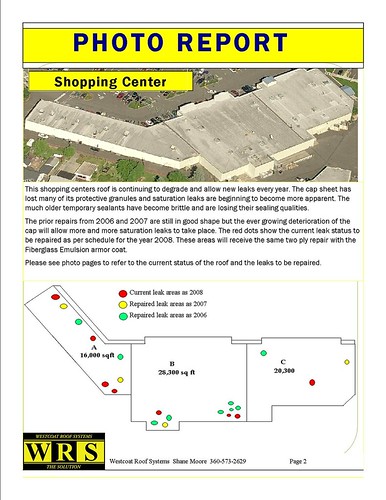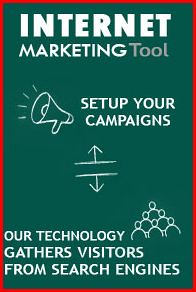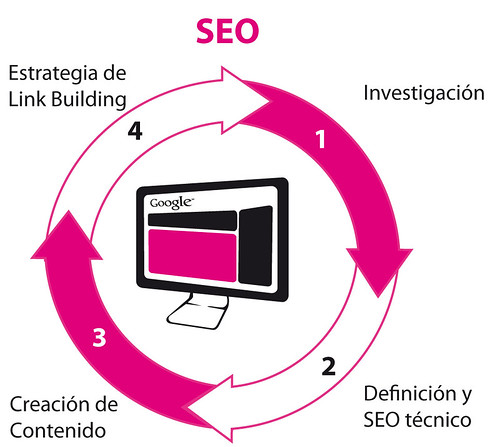There has been a lot of talk as to whether or not social media is the front runner in another inflated internet bubble waiting to burst, leaving users “virtually” friendless and clueless. Will everyone be out of the loop, with no one keeping track of daily deals, happenings or status updates? Warren Buffet confirmed this fear stating that although it’s not as big as the dot com bubble, social media is not long term by any means. However, industry trends and buyer behaviors are stating otherwise.
Facebook has proven beneficial to marketing efforts for B2C companies, but B2B marketing has struggled to find its footing on the platform. That’s where LinkedIn has emerged as the go-to medium for B2B marketers.
A recent study done by BtoB Magazine, showed that when asked “Which of the following social media methods does your company currently use for your B2B marketing (i.e. not personal use)” 72% of B2B marketers said LinkedIn. After reaching more than 100 million users, LinkedIn has solidified its niche as Facebook in a business suit, and B2B companies have taken notice.
The 2011 State of Inbound Marketing (an annual report done by HubSpot, an inbound marketing software company) found that 61% of B2B marketers who participated in the survey acquired a customer through LinkedIn. The targeted and measurable aspect of inbound marketing is what makes it so attractive to smart business owners who are tired of spending money on marketing with no proof that it’s working. Former Chief Marketing Officer of McDonald’s, M. Lawrence Light said, “It no longer makes economic sense to send an advertising message to the many, in hopes of persuading the few.”
Continued on the next page
There has been a lot of talk as to whether or not social media is the front runner in another inflated internet bubble waiting to burst, leaving users “virtually” friendless and clueless. Will everyone be out of the loop, with no one keeping track of daily deals, happenings or status updates? Warren Buffet confirmed this fear stating that although it’s not as big as the dot com bubble, social media is not long term by any means. However, industry trends and buyer behaviors are stating otherwise.
Facebook has proven beneficial to marketing efforts for B2C companies, but B2B marketing has struggled to find its footing on the platform. That’s where LinkedIn has emerged as the go-to medium for B2B marketers.
A recent study done by BtoB Magazine, showed that when asked “Which of the following social media methods does your company currently use for your B2B marketing (i.e. not personal use)” 72% of B2B marketers said LinkedIn. After reaching more than 100 million users, LinkedIn has solidified its niche as Facebook in a business suit, and B2B companies have taken notice.
The 2011 State of Inbound Marketing (an annual report done by HubSpot, an inbound marketing software company) found that 61% of B2B marketers who participated in the survey acquired a customer through LinkedIn. The targeted and measurable aspect of inbound marketing is what makes it so attractive to smart business owners who are tired of spending money on marketing with no proof that it’s working. Former Chief Marketing Officer of McDonald’s, M. Lawrence Light said, “It no longer makes economic sense to send an advertising message to the many, in hopes of persuading the few.”
Continued on the next page
bench craft company
 The NFL and its locked-out players have completed their first day of mediation under a court order and will meet again Friday as they try to resolve their labor dispute.
The NFL and its locked-out players have completed their first day of mediation under a court order and will meet again Friday as they try to resolve their labor dispute.
bench craft companyThe Week takes a short look at what yesterday's GE news hoax may have actually accomplished: --"It was a glimpse of an ideal world." Idea here is that the fake storyline might have helped people imagine a world where businesses "biggest ...
bench craft companyBut with the other option being to talk about the Republican plan to abolish Medicare, apparently politicizing this young man's death looked a whole lot better to Fox News. Pathetic. (h/t Balloon Juice) ...
bench craft company Seas0nPass jailbreak tool has for both Windows and Mac has been updated with the latest untethered exploit to untether the jailbreak on second generation Apple TV, running on the latest iOS 4.3.1 (4.2.1)
For those of you who don’t know, Seas0nPass jailbreak tool is like PwnageTool for Mac, or Sn0wbreeze for Windows, which can can create custom jailbroken .IPSW files for your second-gen Apple TV.
Before you proceed with the jailbreak, you will need the following:
- A Micro-USB cable
- iTunes 10.2.1
- iOS 4.2.1 (Based on iOS 4.3) for Apple TV
- Seas0nPass
All download links are posted at the end of this article.
Step 1: Download and launch Seas0nPass.
Step 2: Now select “Create IPSW” option to build your own custom jailbroken 4.3.1 firmware for Apple TV.
Step 3: Now wait for Seas0nPass to download all the files required for creating custom firmware.
Step 4: When prompted by Seas0nPass, connect your Apple TV using a micro-USB cable (leave power disconnected), and hold-down both the ‘MENU’ and ‘PLAY/PAUSE’ buttons for 7 seven seconds.
Step 5: iTunes should now open automatically to start the restore process.
Step 6: iTunes will confirm the restore when complete. Once done, your Apple TV will be fully jailbroken, untethered on iOS 4.3.1.
Once complete, remove the USB cable and connect the HDMI cable.
Once you are done with the jailbreak, you can install the following apps on your jailbroken 2nd-gen Apple TV:
- How to Install XBMC Media Center on Apple TV 2G [Guide]
- Plex Has Been Ported to Jailbroken Apple TV 2G ! [VIDEO]
- How to Install NitoTV Weather and RSS App on Apple TV 2G [Jailbreak]
- Apple TV 2G Gets Web Browser and Last.fm Apps via aTV Flash [Video]
- Exposed VNC Server Plugin Enables Remote Access On Apple TV 2G
Required download links are as follows:
Download iOS 4.3.1 (4.2.1) for Apple TV
Download iTunes 10.2.1 for Mac OS X
Download Seas0nPass for Mac OS X
Download Seas0nPass for Windows
You can follow us on Twitter or join our Facebook fanpage to keep yourself updated on all the latest iPhone jailbreaking and unlocking releases.
As rumors of a later-than-usual iPhone launch for 2011 persist, a new report reveals that the notoriously secretive Apple is being even more careful than usual when dealing with overseas suppliers.
"Apple is keeping its iPhone 5 cards extra close to the vest on this launch to avoid a falloff in iPhone 4 demand ahead of a refresh, especially given the February launch of the CDMA iPhone 4 with Verizon," Analyst Brian White with Ticonderoga Securities said in a note to investors on Friday. He believes that the iPhone 5 could still launch in June or July, as previous models have.
White noted that various rumors have pointed toward a launch later than June this year for the fifth-generation iPhone. One report from March alleged that Apple has not even begun ordering components for the anticipated "iPhone 5," and the device is slated to arrive in the company's 2012 fiscal year, which begins in late September.
And a third report alleged that Apple is working on a major revamp of iOS, its mobile operating system, for version 5.0. New features like cloud-based storage of music, photos and video are rumored to arrive in the update this fall, likely alongside new iPhone hardware.
But despite all of those reports, White isn't yet convinced that the iPhone 5 will be introduced later than its typical June or July timeframe.
"Although we do not have a smoking gun that definitively rules out a delayed autumn unveiling or one that supports a launch this summer, there is a pattern of activity in motion with the supply chain that makes us question a delayed launch," he said.
White also cited sources who indicated that iPad sales could reach up to 40 million units in calendar year 2011. And supply chain sources also indicated that disruption from the earthquake and tsunami disaster in Japan will actually end up benefitting Apple, as suppliers will "rush to support Apple at the expense of competitors."
The analyst already revealed earlier this week that Apple has been offering upfront cash payments to component suppliers in order to secure components in the wake of the disaster in Japan. Apple has apparently also been using a "three cover guarantee," referring to capacity, stock and price, to block out competitors and prevent them from building ample supply of devices.
bench craft companybench craft companyIt’s not such a wonderful time to be a doctor, patient, hospital, health plan or pharma company, but judging by the quality and quantity of entries received for this edition of the HWR, it’s a wonderful time to be a wonk.
A couple weeks ago CMS released draft rules for Accountable Care Organizations. Several bloggers weighed in on that development:
- Mark McClellan and Elliott Fisher at Health Affairs provide some historical context and argue that “those who care deeply about health care reform all have a common interest in the success of ACOs as a way of avoiding more classic fee-for-service payment cuts to providers.”
- On a more downbeat note, The Road to Health concludes, “Dr. Berwick and his colleagues at CMS appear to have taken the ACO concept and made it into a financial program that only delusional practice administrators, or physician organizations bent on financial self-destruction, could love.”
- The Healthcare IT Guy expects ACOs to be “far more lucrative and disruptive than Meaningful Use and likely to yield more patient quality improvements.”
- GE Healthcare puts the emphasis on ACO change management challenges: “Healthcare executives and management teams are left to focus on preparing their organizations for a cultural shift of seismic proportions.”
- HealthBlawg reviews the proposed rules and produces 8 takeaways. #2: “This is the Frankenstein regulation: A Medicare beneficiary must sit on the board of the ACO, CMS must approve all marketing materials before they are used.”
In the midst of the battle over funding the 2011 budget, House Budget Chairman Paul Ryan came out with a plan to radically restructure Medicare and Medicaid starting in 2012:
- The Apothecary likes much of what he sees and thinks the proposal may force Democrats to devise a credible plan of their own
- John C. Goodman’s Health Policy Blog contrasts PPACA and the Ryan plan. “Obviously, the path we are on leads to an impossible place. So the only question is whether we are going to get off the current path in a planned, orderly way or whether we are going to let unplanned chaos do the trick.”
- Wright on Health is less impressed and wonders, “if Rep. Ryan is so adamant about reducing the deficit, why is he cutting taxes for the wealthy and cutting programs for the poor and the elderly?”
- Managed Care Matters is decidedly unswayed. “If you were looking for real solutions to the health cost problem, you’re going to be sorely disappointed… Unfortunately, he’s fallen into the same trap his Democratic colleagues did with their version of health reform – the Ryan plan does little to address costs.”
- The Incidental Economist takes issue with Ryan’s plan to convert Medicaid to block grants and cut spending. “Should Medicaid be cut back, more people will be uninsured. Contrary to what some wish you to believe, those who become uninsured will suffer worse health outcomes”
As if the ACO rules and Ryan plan weren’t enough, there’s more on Medicare in the blogosphere:
- The Covert Rationing Blog –always good for a lighthearted pick me up– “asserts that we are one giant step closer to the day when it will become illegal for all Americans to spend their own money on their own healthcare.”
- Dr. Liberty discusses CMS’s deliberations on whether to pay for Provenge, a pricey prostate drug. “Decisions are made on the basis of politics, and the drive is to cover everything, leading to higher costs.”
Amid all the federal policy blogging, there’s still some room for technology talk:
- Healthcare Talent Transformation has had it with Health Net’s repeated goof up’s leading to loss of confidential data. Although it may seem like there’s not much the average person can do, the blog argues, “You can make an impact on the security of your sensitive data by conducting due diligence when it comes to your insurance provider.”
- The Healthcare Blog offers a video collage of the new Kaiser Permanente Center for Total Health. “The Center is a pretty fascinating place–part tech and idea showcase and part meeting room. Certainly no other health care organization that I’m aware of has spent so much on a place designed to stimulate the imagination and enhance conversation–under the nose of the folks on Capitol Hill.”
- Meaningful HIT News features a podcast with mHealth Initiative’s Peter Waegemann, who’s shifted over from EMRs to ride the mobile wave
- Healthcare Economist delves into new papers that, “examined how to develop accurate algorithms to account for cancer stage in studies using claims data.”
It was encouraging to receive a couple submissions about journalism:
- Disease Care Management Blog asks, “Is the kerfuffle over National Public Radio (NPR) the long delayed comeuppance for liberal bias run amok, or a narrow-minded attack on the inconvenient truths from journalistic excellence?” The blog reaches into the world of medicine and discusses of “framing” and its impact on patient decision making to provide an answer
- HealthNews ReviewBlog cites, “daily evidence of the need for improvement in health care journalism – especially when we see examples like hype of a tiny, preliminary study of strawberries for esophageal cancer.”
We always have room in the Health Wonk Review for some posts on medical ethics:
- Nuts for Healthcare looks at the pharma industry and concludes, “Doctors need to take a more definitive stand against the specter of industry influence. A good target? Industry sponsorship of continuing medical education.”
- Health Care Renewal is concerned that so-called government run programs are more private than we think. “The majority of Medicaid has been out-sourced to private health care insurance companies… We need to have some real discussions about the rise of corporatism in US health care, in other aspects of US society and around the world.”
And finally, a few odds and ends
- Workers’ Comp Insider provides resources for employers concerned about radiation exposure
- Colorado Health Insurance Insider chronicles the decline of bipartisanship in the creation of a health insurance exchange for that state. “Healthcare reform has become such a polarized topic that it’s difficult for lawmakers to have any stance other than for it or against it. Even though the health insurance exchanges would be marketplaces that sell private health insurance, the word ‘exchange’ has been thrown around so much during the reform debates that many opponents of the PPACA see it as synonymous with ‘ObamaCare.’”
- Last week I went to a health care direct to consumer marketing conference to see former TimeWarner CEO Jerry Levin interviewed by OrganizedWisdom CEO Steve Krein. I also shared my thoughts in the video clip below
Thanks for reading the Health Wonk Review! The Incidental Economist hosts the next edition.
Share
Over the years, entrepreneurs and corporate executives have devised any number of clever ways for getting rich off the working poor, but you'd have to look long and hard to find one more diabolically inventive than the RAL. Say you have a $2,000 tax refund due and you don't want to wait a week or two for the IRS to deposit that money in your bank account. Your tax preparer would be delighted to act as the middleman for a very short-term bank loan—the RAL. You get your check that day or the next, minus various fees and interest charges, and in return sign your pending refund over to the bank. Within 15 days, the IRS wires your refund straight to the lender. It's a safe bet for the banks, but that hasn't stopped them from charging astronomical interest rates. Until this tax year, the IRS was even kind enough to let lenders know when potential borrowers were likely to have their refund garnished because they owed back taxes, say, or were behind on child support.
Hewitt didn't invent the refund anticipation loan. That distinction belongs to Ross Longfield, who dreamed up the idea in 1987 and took it to H&R Block CEO Thomas Bloch. "I'm explaining it," Longfield recalls, "but Tom is sitting there going, 'I don't know; I don't know if people are going to want to do that.'"
Tax-prep shops are as common as fast-food joints in many low-income neighborhoods—there are at least half a dozen on one three-block stretch of South Broadway in Yonkers, N.Y., where these photographs were taken. A few offer reasonably priced accounting, while others charge hundreds of dollars for 20 minutes of work. But Longfield knew. He worked for Beneficial Corp., a subprime lender specializing in small, high-interest loans for customers who needed to finance a new refrigerator or dining-room set. His instincts told him the RAL would be a big hit—as did the polling and focus groups he organized. "Everything we did suggested people would love it—love it to death," he says.
He also knew Beneficial would make a killing if he could convince tax preparers—in exchange for a cut of the proceeds—to peddle this new breed of loan on his employer's behalf. Ultimately, Longfield persuaded H&R Block to sign up. But no one was as smitten as John Hewitt—who understood that people earning $15,000 or $20,000 or $25,000 a year live in a perpetual state of financial turmoil. Hewitt began opening outposts in the inner cities, Rust Belt towns, depressed rural areas—anywhere the misery index was high. "That was the low-hanging fruit," he says. "Going into lower-income areas and delivering refunds quicker was where the opportunity was."
Customers wanting a RAL paid Jackson Hewitt a $24 application fee, a $25 processing fee, and a $2 electronic-filing fee, plus 4 percent of the loan amount. On a $2,000 refund, that meant $131 in charges—equivalent to an annual interest rate of about 170 percent—not to mention the few hundred bucks you might spend for tax preparation. "Essentially, they're charging people triple-digit interest rates to borrow their own money," says Chi Chi Wu, a staff attorney at the National Consumer Law Center.
In 1988, the first year he began offering the loans, Hewitt owned 49 stores in three states. Five years later, he had 878 stores in 37 states. And five years after that, when Cendant Corp.—the conglomerate that owned Avis, Century 21, and Days Inn—bought Jackson Hewitt for $483 million, his earliest backers received a $2 million payout on every $5,000 they'd invested. Today, with 6,000 offices scattered across the country, Jackson Hewitt is more ubiquitous than KFC, and has about as many imitators.
THERE WOULD BE NO refund anticipation loans, of course, without tax refunds. And by extension there would be no RALs without the Earned Income Tax Credit, the federal anti-poverty initiative that served as the mother's milk nourishing the instant-refund boom. Welfare reform was the catalyst for the EITC, which was aimed at putting extra cash in the pockets of low-income parents who worked. What motive does a single mother have to get a job, conservative thinkers asked, if there was scant difference between her monthly take-home pay and a welfare check? It was Richard Nixon who first floated the idea that led to the Earned Income Tax Credit; Ronald Reagan dubbed it "the best pro-family, the best job creation measure to come out of Congress." In 2007, the US Treasury paid out $49 billion to 25 million taxpayers.
bench craft companyThe networks of NBC Universal, including CNBC, MSNBC and NBC News, are all lining up green-themed programming for the 2011 installment of the company's Green is Universal “Earth Week” April 17-24. On “Today” Kathie Lee Gifford and Hoda ...
bench craft companyRead our Wii news of Wii 2 to be revealed at E3 – report.












